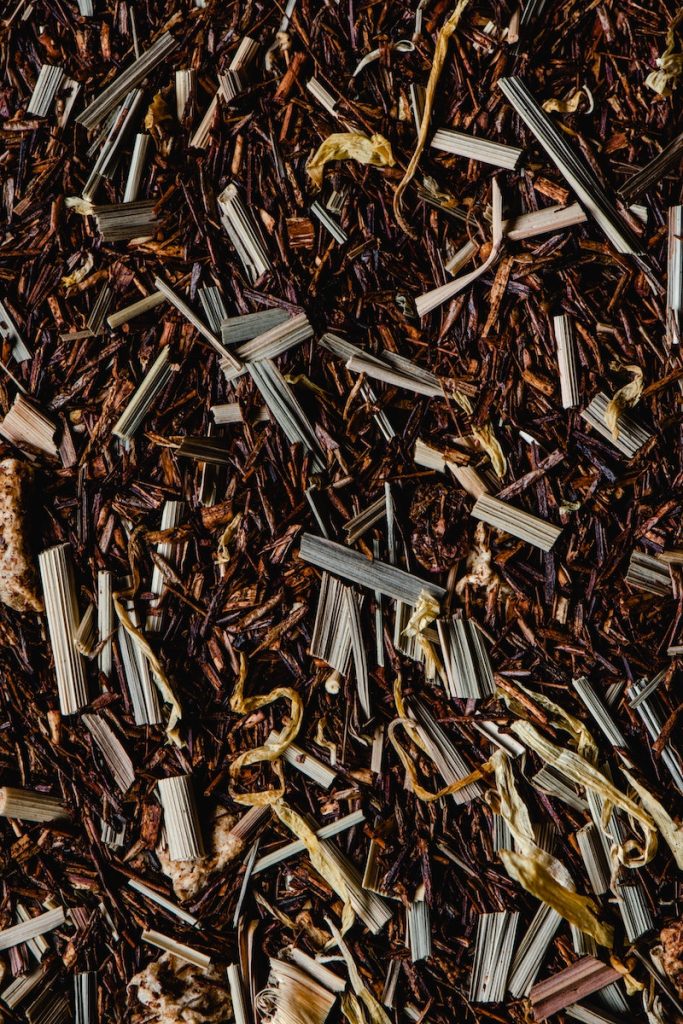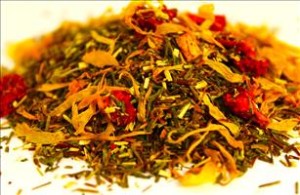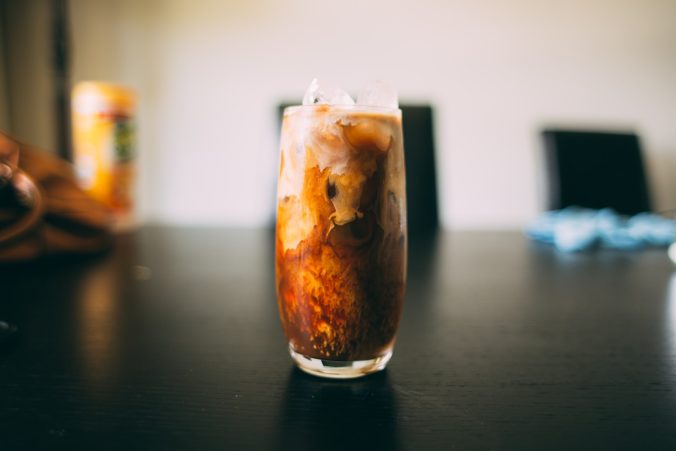Table of Contents
- Our Guide to Serving Rooibos Tea Cold
- What is Rooibos Tea?
- Health Benefits of Drinking Cold Rooibos Tea
- How to Prepare Cold Rooibos Tea
- Serving Suggestions for Cold Rooibos Tea
- Potential Side Effects of Drinking Cold Rooibos Tea
- Frequently Asked Questions about Rooibos
- What Is The Best Temperature To Serve Cold Rooibos Tea?
- Conclusion to enjoying cold Rooibos
Our Guide to Serving Rooibos Tea Cold
Are you looking for a refreshing drink to enjoy on a hot summer day? Then why not try rooibos tea, an herbal infusion that can be served both hot and cold? With its unique flavor profile, this beverage is sure to tantalize your taste buds. In this article, we’ll explore the benefits of drinking cold rooibos tea as well as how to make it so you can start sipping right away.
Rooibos tea has been gaining popularity in recent years due to its versatility and health benefits. Not only does it have lower levels of caffeine than other types of tea, but it also contains powerful antioxidants like quercetin and luteolin that help fight off free radicals and provide anti-inflammatory effects. But did you know that you can serve rooibos tea cold too? That’s right—with just a few simple steps, you can create a delicious icy version of this herbal infusion, ready for enjoyment any time of year!
Cold rooibos tea offers many advantages over traditional hot versions. It’s easier to prepare (you won’t need to wait for water to boil), has enhanced sweetness from added ingredients like honey or sugar, and provides an extra cooling effect when temperatures outside are high. We’ll tell you all about what makes it such a great choice and offer step-by-step instructions on how to make your own cup at home. So keep reading if you’re interested in learning more about enjoying chilled rooibos tea! And, if you are still sheepishly wondering how to say Rooibos , don’t worry as we put together an entire article. So now you don’t have to worry about saying it wrong, and really no matter how you say it is right if you are cool with how it sounds!
What is Rooibos Tea?
Rooibos tea is a unique herbal beverage the comes from South Africa that has become increasingly popular in the last few years. It’s made from the leaves of an indigenous bush called Aspalathus linearis, which are oxidized and then brewed into an earthy-tasting infusion. Unlike other teas, rooibos does not contain caffeine or tannins, making it a great option for those who don’t tolerate these substances well.

The flavor profile of rooibos is complex, but generally sweet with subtle woodsy notes and hints of caramel; depending on how it’s prepared, some varieties may even have chocolatey undertones. Health benefits include being high in antioxidants and minerals like zinc, iron, potassium, calcium, manganese, and magnesium. Additionally, its low acidity makes it easier to digest than regular black or green teas. All this combined makes rooibos a delicious alternative to traditional tea!
Health Benefits of Drinking Cold Rooibos Tea
Indeed, rooibos tea is best known as a hot beverage. However, drinking it cold can be just as refreshing and beneficial for one’s health.
Firstly, replacing sweetened drinks such as soda with unsweetened, cold rooibos tea provides numerous health benefits. As an all-natural drink without added sugars or artificial ingredients, consuming cold rooibos tea helps reduce calorie intake while providing essential vitamins and minerals. Additionally, this herbal beverage is loaded with antioxidants that have been linked to reducing inflammation throughout the body and may even help protect against cancer.
Furthermore, since rooibos tea doesn’t contain caffeine like many other teas do, it serves as a healthy alternative for those looking to avoid stimulants in their diet. It also has high levels of zinc, which boosts immunity and aids digestion. Plus, its natural sweetness allows you to enjoy it plain or add some honey as desired. All these factors make it easy to choose cold rooibos tea over unhealthy sugary drinks any day!
How to Prepare Cold Rooibos Tea
Preparing cold rooibos tea is a simple process that yields an incredibly refreshing beverage. To make it, steep several teaspoons of rooibos leaves in hot water for 3-5 minutes. Strain the resulting liquid into a heat-safe container and allow it to cool completely before transferring it to the refrigerator or cooler. Once chilled, pour your delicious iced rooibos over ice and garnish with fresh fruit if desired.
The amount of time spent steeping will depend on how strong you’d like the flavor to be, but keep in mind that once cooled, the strength may become slightly diluted due to melting ice cubes. Experimenting with different ratios of tea leaves and water will help you find what works best for you! So don’t forget to try adding more or less leaves depending on your preferences. Enjoy this unique blend of sweet and earthy flavors, perfect for any occasion!
Serving Suggestions for Cold Rooibos Tea
As summer gets warmer, fans of rooibos tea can take comfort in the fact that their favorite drink tastes just as good when it’s cold. So, if you keep a few tips and suggestions for serving in mind, you can drink iced rooibos all summer long.
Firstly, to truly appreciate the unique flavor profile of cold rooibos tea, it’s best to opt for unsweetened varieties. Unsweetened teas allow you to appreciate the natural complexity and subtle nuances of the tea without added sugar or other ingredients masking its original flavor. Additionally, adding fresh herbs like basil or mint also enhances their aromatic qualities while providing your drink with an extra dose of nutrition. Furthermore, if desired, you could always add some honey or agave nectar for more sweetness since these are nature-based sweeteners that do not contain artificial preservatives.
Rooibos tea pairs well with light snacks such as fruit salad, cheese platters, and crackers, thus making it the perfect accompaniment for summertime get-togethers with family and friends. Alternatively, when entertaining guests, serve up creative twists on classic recipes by substituting regular water for rooibos tea in dishes like sorbet or chilled soup—both options are sure to tantalize taste buds! Ultimately, no matter what way you choose to consume this versatile beverage, it will surely become a staple go-to refreshment during hot weather months.
Rooibos, like other tisanes, are great because they don’t really get over steeped the same way tea can become bitter. This lends itself to a nice brewing length for a strong cup. You can also re brew them if you enjoy lighter cups of Rooibos.
Potential Side Effects of Drinking Cold Rooibos Tea
Cold rooibos tea is a popular drink, especially during warm weather. But although it’s refreshing and tasty when served chilled, there are potential side effects to consider before drinking this beverage.
The most common effect of consuming cold rooibos tea is indigestion. This can come from the naturally high levels of tannins in the tea, which become more pronounced when served cold. Drinking large amounts of cold rooibos tea may cause nausea or even vomiting in some people. In addition, those who suffer from irritable bowel syndrome should avoid drinking too much, as it could make their symptoms worse.
It’s also important to note that if you’re pregnant or breastfeeding, consult with your doctor before adding any type of cold rooibos tea to your diet. While its benefits for health have been widely acknowledged by herbalists and nutritionists alike, consuming it in excess may not be good for expectant and nursing mothers. So keep consumption moderate for optimal safety and enjoyment!
Frequently Asked Questions about Rooibos
Rooibos tea is a unique beverage that’s becoming increasingly popular. In fact, according to the Tea Association of the USA, consumption of rooibos has increased by over 500% since 2017! For those who are unfamiliar with this distinctive drink, it carries distinct flavor notes and characteristics.
Rooibos tea originates in South Africa, where it has been enjoyed for centuries. It typically has an earthy, slightly sweet flavor profile with subtle notes of honey and nuts. The overall taste remains consistent whether you’re drinking hot or cold rooibos tea; however, some people find they prefer one temperature over the other. Generally speaking, many people enjoy adding sugar or lemon juice to their cup as well.
It can be enjoyed both hot and cold without compromising its unique taste. If served chilled, there may be more sweetness present in the dish due to refrigeration bringing out some of the natural sugars found within the leaves, making it a great summer refreshment choice. However, when served warm, it brings out bolder flavors like woodsy spices and peppermint that make for a truly comforting experience in the colder months.
Rooibos tea is a caffeine-free beverage that has become increasingly popular in recent years. It’s made from the leaves of the Aspalathus linearis bush, which grows only in South Africa’s Western Cape region. Many people enjoy its sweet and earthy flavor notes. But what about its caffeine content?
Unlike other teas, rooibos tea does not contain any caffeine at all—it’s totally free! This makes it an ideal choice for those who are sensitive to or avoid caffeine altogether. Rooibos also contains several beneficial minerals like iron, calcium, copper, manganese, and zinc that can help you maintain your overall health.
With its low levels of tannins (the compounds responsible for bitterness), rooibos tea brews up smooth without the need for added sweeteners or milk. So if you’re looking for a naturally decaffeinated drink with plenty of flavor and benefits, look no further than this unique herbal infusion!
Storing cold rooibos tea is like keeping a hidden treasure tucked away in your own home. This one-of-a-kind drink doesn’t have any caffeine, so it’s a great way to relax and cool off at any time. But how long can such a special drink be kept before it loses its flavor or potency?
The answer depends on the type of rooibos you have chosen. Loose leaf rooibos will last the longest when stored properly in tightly sealed containers in a cool, dark spot. If maintained this way, it will keep for up to two years before needing to be thrown out. On the other hand, pre-packaged teabags should be used within six months for optimal results since their contents are more exposed to air and light than loose leaves.
It’s important to note that even if stored correctly, all types of rooibos tea may lose some of their natural sweetness over time. To ensure maximum taste and aroma from your favorite tea, try not to store too much at once; use only what you need so you can relish each sip!
When it comes to cold rooibos tea, one of the most interesting questions is whether or not there are any nutritional benefits. Despite the common belief that hot beverages are healthier than cold ones, rooibos tea may be an exception. In fact, drinking cold rooibos can provide a variety of health benefits—and even more when made from organic ingredients.
Organic cold rooibos tea contains antioxidants that are beneficial for overall health. It’s also an excellent source of minerals such as iron, calcium, and magnesium. Additionally, research suggests that drinking cold rooibos may help reduce inflammation in your body due to its flavonoid content. And if you’re looking for something caffeine-free, then opting for a cup of chilled rooibos is definitely worth considering! Not only will it give you a refreshing boost, but it will also provide important nutrients that can support a healthy lifestyle.
So while some people swear by the therapeutic effects of warm beverages like coffee and tea, those who prefer their drinks colder should know that they don’t have to miss out on all the health benefits either! Cold rooibos tea provides numerous vitamins, minerals, and antioxidants without all the added sugar or calories associated with other beverages, making it a great choice for anyone looking to stay hydrated throughout the day while still getting essential nutrition.
What Is The Best Temperature To Serve Cold Rooibos Tea?
Serving cold rooibos tea is like starting a race: if you don’t get the temperature just right, it’ll be a finish that’s anything but satisfying. The perfect cup of coffee starts with finding the best temperature for your cold beverage—one that will tantalize taste buds and refresh quenched palates.
Think of it as an art form: getting the exact degree to make sure this age-old South African brew doesn’t become too bitter or astringent on a hot day. That being said, there are several ways to go about cooling down this delicious herbal infusion without compromising its flavor profile. A good rule of thumb when making cold rooibos tea is not to let it steep in boiling water at any point during preparation; instead, allow it to cool naturally by allowing the pre-boiled water to rest before pouring over your tea leaves. This method ensures that no bitterness creeps into the mix and helps retain all those lovely notes of honey and citrus.
If you’d like something sweetened, try adding some sugar syrup or even flavored syrups such as almond or coconut; these can help bring out deeper flavors within the blend that may have been hidden before. Furthermore, if you prefer more body in your drink, then consider using a colder setting than usual, though do remember to experiment until you find what works for you! Ultimately, having a sense of adventure here pays off because each cup has potential surprises waiting inside. Allowing yourself time to explore different temperatures and combinations could open up new doors for future cups of joy, so keep exploring!

Conclusion to enjoying cold Rooibos
Rooibos tea is a wonderfully flavorful beverage that can be enjoyed both hot and cold. Most people find the flavor notes of rooibos to be slightly sweet and nutty, with hints of vanilla or caramel. The caffeine content of this drink is low compared to other teas, making it an ideal choice for those looking for an energy boost without the jitters.
Cold Rooibos tea can last up to 5 days when stored in the refrigerator, but should not be left out too long at room temperature as the taste may start to change due to oxidation. Not only does cold rooibos have great flavor notes, but it also has many nutritional benefits like antioxidants, polyphenols, minerals, and vitamins, which help support your body’s natural defenses against diseases.
The best temperature for serving cold rooibos tea is around 40–50 degrees Fahrenheit, so that you get all the health benefits without sacrificing any of its wonderful taste! For example, Sarah loves to enjoy her favorite cup of cold rooibos after a hard day’s work, giving her time to relax while still providing some nourishment for her body. Whether you choose to make your own blend or buy pre-made bottles from the store, there are plenty of delicious ways to enjoy this unique beverage!
